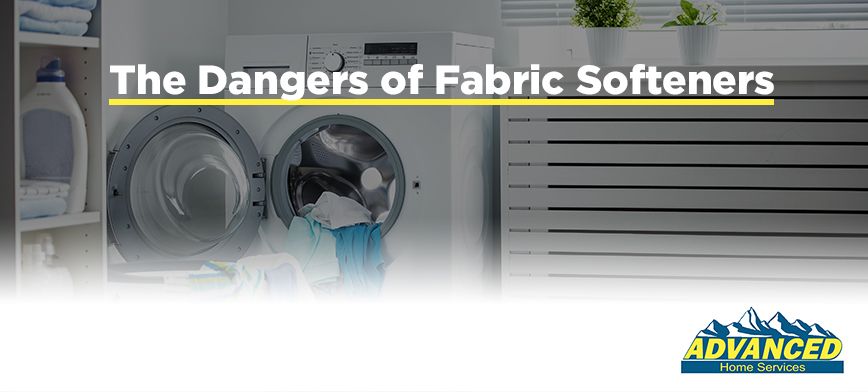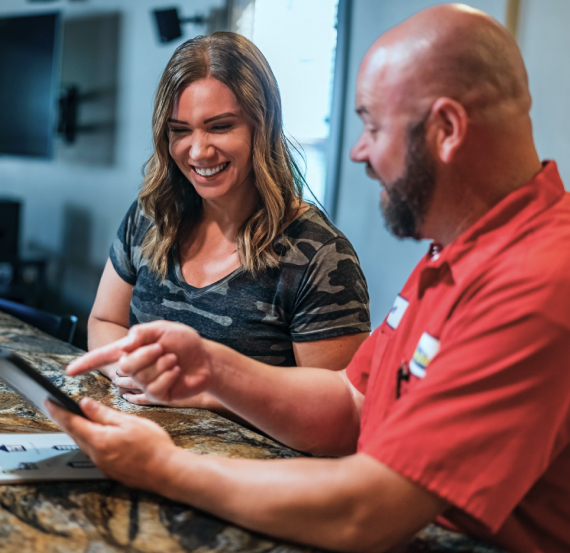

The Dangers of Fabric Softeners

Did Millennials Kill Fabric Softener?
Millennials have long been blamed for the death of many markets—baseball, the doorbell industry, American cheese slices…the list goes on and on. Fabric softener sales dropped 15% from 2015 to 2017—a stat that is again, being blamed on millennials. However, while some attribute the decline in sales to millennials not knowing what fabric softener is used for, The Wall Street Journal reports that sales have been dropping steadily for more than a decade.
Has our laundry technology simply surpassed the need for fabric softeners? Or is there more to it?
Why Aren’t People Using Fabric Softeners?
One reason sticks out clearly: education. Today’s young adults are more highly educated than their predecessors were, and thanks to the wide-reaching scope of the internet, people have access to more information now that ever before. This makes it easy to locate a simple truth—that fabric softeners (and other household chemicals) are just not good for us.
What’s In Fabric Softeners?
Despite the growing number of studies and stories that indicate that fabric softeners may cause your clothes to become more flammable, another cause for concern is the chemicals making up the softener itself. According to Scientific American, “[…] fabric softeners are designed to stay in your clothes for extended periods of time, such chemicals can seep out gradually and be inhaled or absorbed directly through the skin.”
Some chemicals found in fabric softeners include:
-
Ethyl Alcohol – a carcinogen that is listed by both the IARC (International Agency for Research on Cancer) and the NTP (National Toxicology Program).
-
Fragrances and dyes – artificial fragrances and dyes can cause skin irritation as well as allergic reactions.
-
Glutaraldehyde – a regulated chemical, but one that can cause respiratory issues and skin irritations or conditions such as eczema.
-
Hexylene Glycol – an aerosol that can be inhaled and is associated with eye, skin, and respiratory irritation.
-
Hydrochloric Acid – an acid that can cause severe burns and skin damage and is toxic when inhaled.
-
Quaternary Ammonium Compounds (Di-C14-18) – a chemical that can cause serious eye damage or skin irritation.
Better Ways to Soften Clothes
Due to all these chemicals, young adults have been pushing away from the continued use of traditional household cleaners in favor of other, more natural methods.
-
Use vinegar in your laundry. There are many benefits to using vinegar in your laundry instead of chemical fabric softeners. All kinds of vinegar have acetic acid, which helps brighten, soften, and kill odors in your laundry. However, make sure you’re using distilled or white vinegar to avoid any unsightly stains in your otherwise fresh laundry.
-
Use baking soda. National Geographic’s Green Guide recommends adding a cup of baking soda to your wash cycle for softer clothes without the use of harsh chemicals.
-
Use wool dryer balls. Throwing a few wool dryer balls into your dryer with your clothing can help to reduce static and makes your clothes softer.
-
Install a water softener. Softer water = softer clothes! Water treatment and filtration systems keep hard minerals and chemicals out of your water supply, which means the water you’re using to clean your clothes is easier on the fabric as well as your appliances.
Hard water is a common issue in our area, as it is throughout the country, and many homeowners have grown tired of the effects it can have on your laundry, skin, and hair. We offer water softeners for installation and replacement in Idaho Falls. We can also provide you with water testing so that you can make an informed decision as to which system would work best for your home. Unlike many other water treatment companies, we use specialized equipment that is specifically made to deal with the water problems in southeast Idaho.
Contact Advanced Home Services online or at 208-745-9406 to schedule your appointment today!


